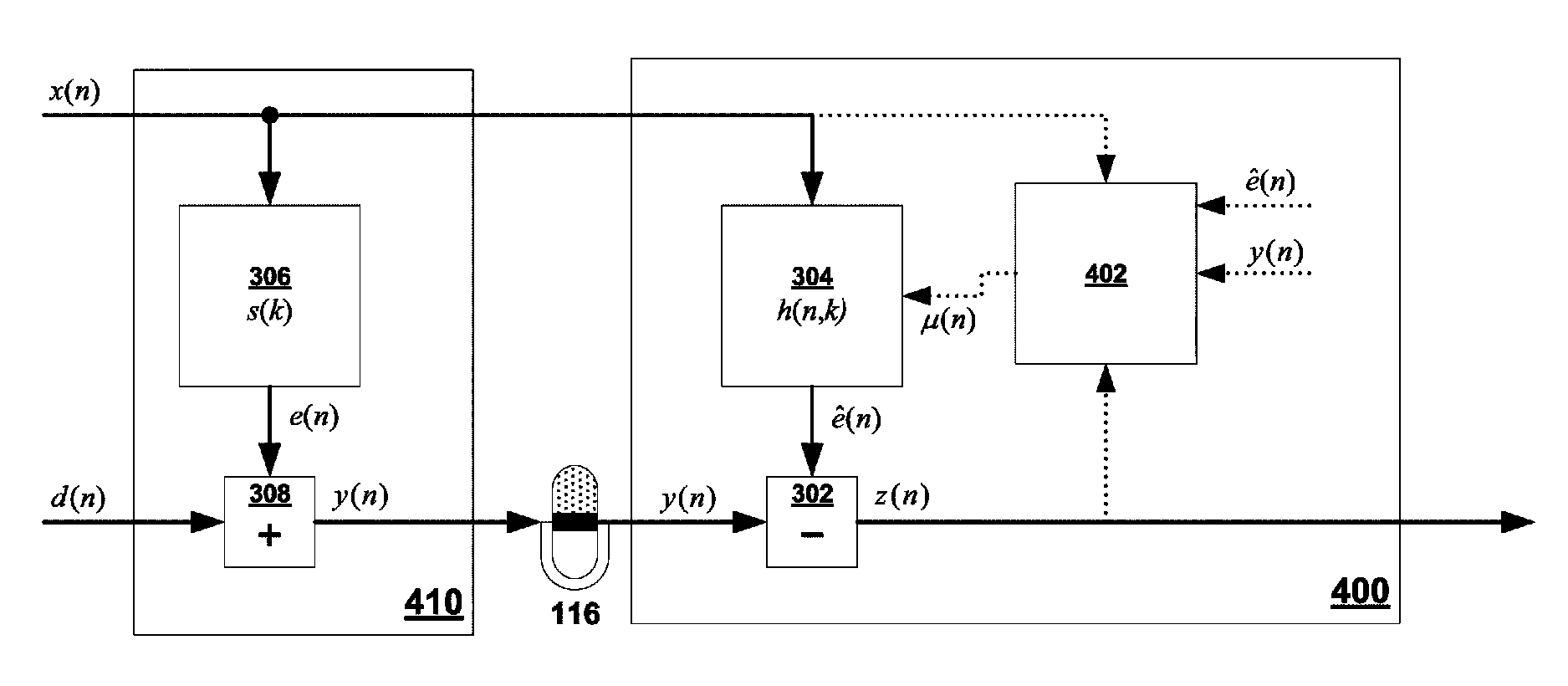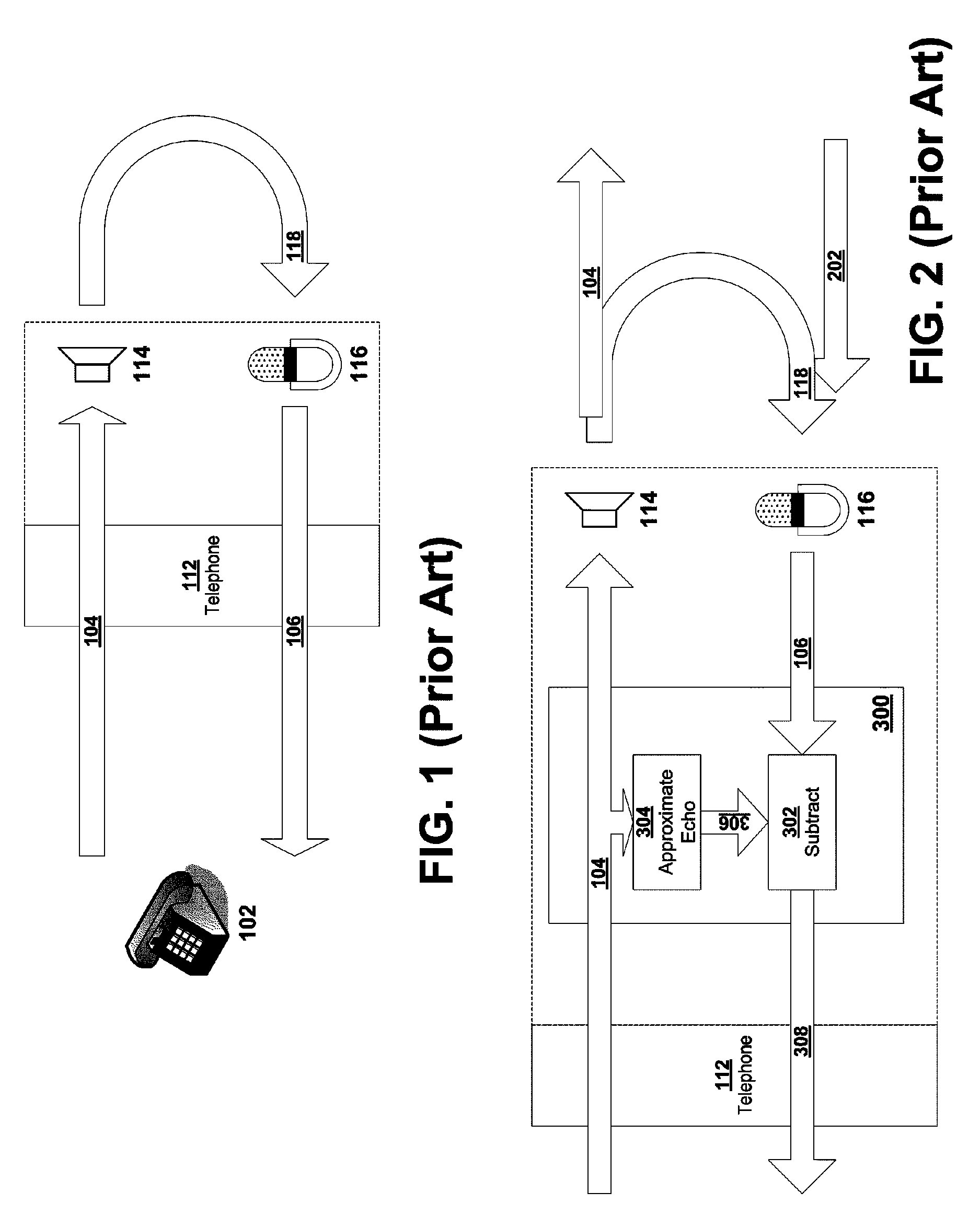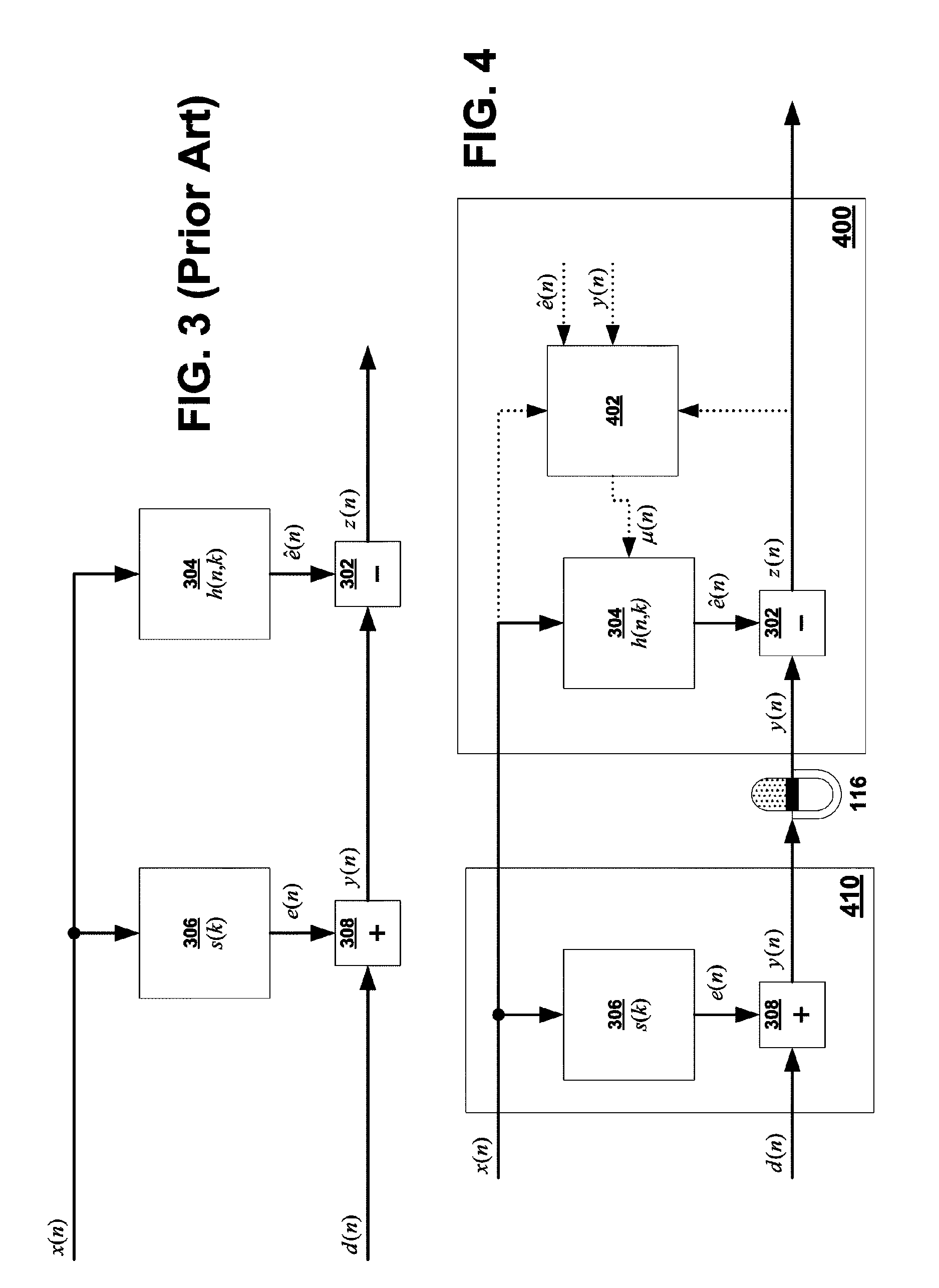Systems and methods for echo cancellation and echo suppression
a technology of suppression and suppression, applied in the field of two-way communication systems, can solve the problems of poor performance of nlms adaptive filtering algorithm, unsuitable for changing environment, and distraction of echoes
- Summary
- Abstract
- Description
- Claims
- Application Information
AI Technical Summary
Benefits of technology
Problems solved by technology
Method used
Image
Examples
Embodiment Construction
[0044]A detailed description of embodiments of the present invention is presented below. While the disclosure will be described in connection with these drawings, there is no intent to limit it to the embodiment or embodiments disclosed herein. On the contrary, the intent is to cover all alternatives, modifications and equivalents included within the spirit and scope of the disclosure.
[0045]FIG. 4 illustrates an exemplary embodiment of an echo cancellation system. Echo cancellation system 400 comprises echo approximator 302 and subtractor 304 which function as previously described. Specifically, echo approximator 302 generates an approximate echo which is then subtracted from the received signal y(n) at microphone 116 and produces an echo cancelled output signal z(n). It further comprises adaptation coefficient generator 402 which can use the received signal y(n), the output signal z(n), the far-end signal x(n) and the approximate echo ê(n) to generate an adaptation coefficient μ(n)...
PUM
 Login to View More
Login to View More Abstract
Description
Claims
Application Information
 Login to View More
Login to View More - R&D
- Intellectual Property
- Life Sciences
- Materials
- Tech Scout
- Unparalleled Data Quality
- Higher Quality Content
- 60% Fewer Hallucinations
Browse by: Latest US Patents, China's latest patents, Technical Efficacy Thesaurus, Application Domain, Technology Topic, Popular Technical Reports.
© 2025 PatSnap. All rights reserved.Legal|Privacy policy|Modern Slavery Act Transparency Statement|Sitemap|About US| Contact US: help@patsnap.com



